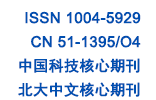DENG Binge, LIN Li, YE Jian
 Abstract
Abstract (
)
 Download PDF
Download PDF (
)
 Knowledge map
Knowledge map
 Save
Save
Gap-enhanced Raman tags (GERTs) represent an innovative optical probe designed based on surface-enhanced Raman scattering (SERS). SERS is a highly sensitive spectroscopic technique used to detect molecular vibrational and transitional information. In the context of SERS, the interaction between molecules and metallic nanostructures, such as Au or Ag nanoparticles, leads to a significant enhancement of Raman scattering signals—a phenomenon capable of amplifying molecular Raman scattering signals by over 10 orders of magnitude. By embedding Raman reporter molecules inside the internal plasmonic metallic nano-junction, GERTs exhibit extraordinary detection sensitivity down to the single-particle detection level; coupled with their ability to provide high-resolution molecular features, GERTs have found extensive applications across a multitude of fields. In this article, we provide a comprehensive introduction to the preparation and optical properties of GERTs, with the goal of realizing their use in practical applications. At the same time, we provide a review of the pioneering use of GERTs as physically unclonable tags, along with their recent advances in biomedical imaging and integrated diagnostics. Finally, we provide a assessment of the challenges GERTs face in real-world application scenarios, providing critical reference points for advancing the clinical translation of GERTs technology. Looking ahead, with further research and development, the novel, stable and super-bright GERTs probes are poised to become a central analytical tool, offering even richer opportunities for practical applications and scientific research.


